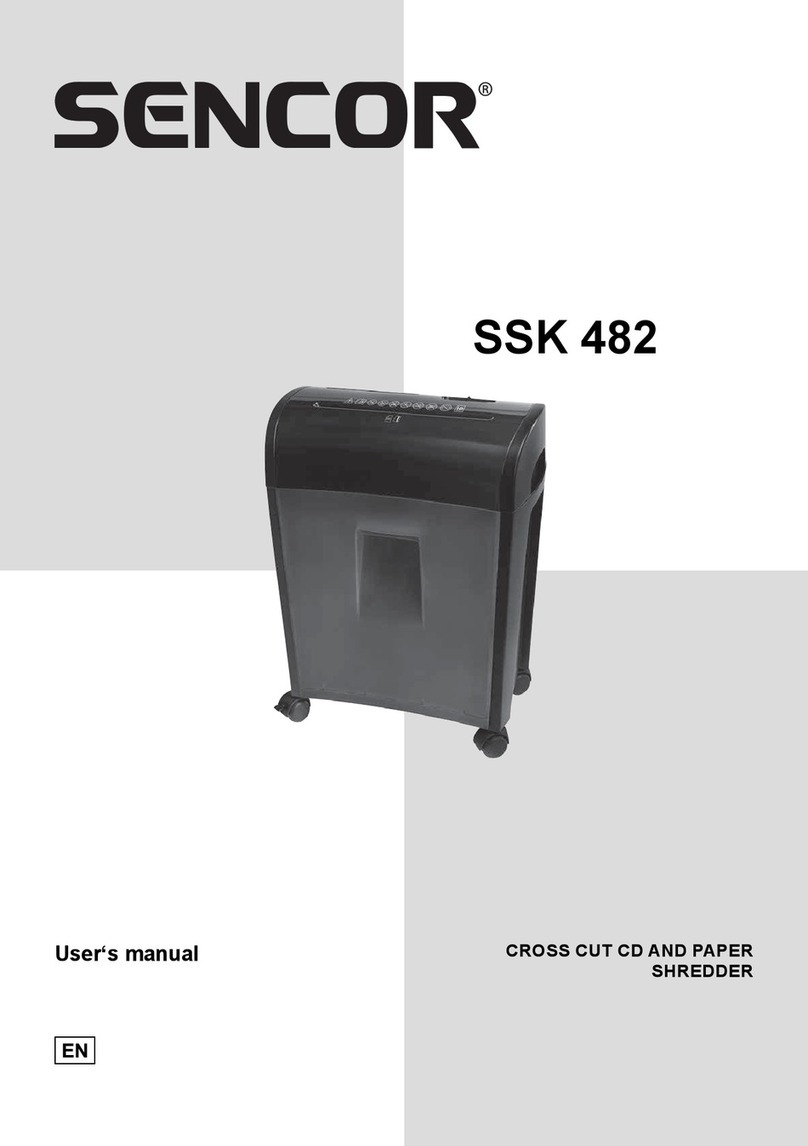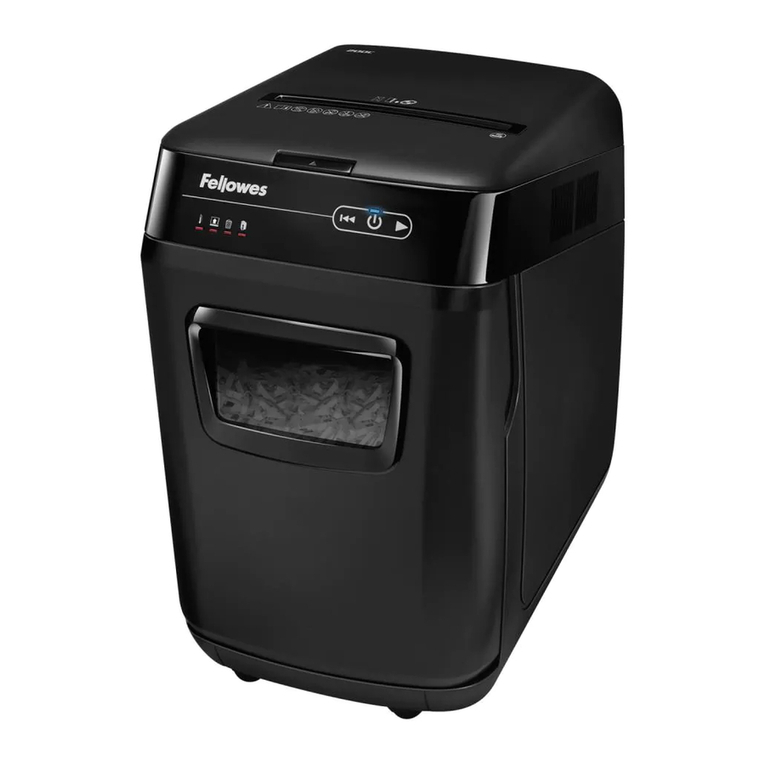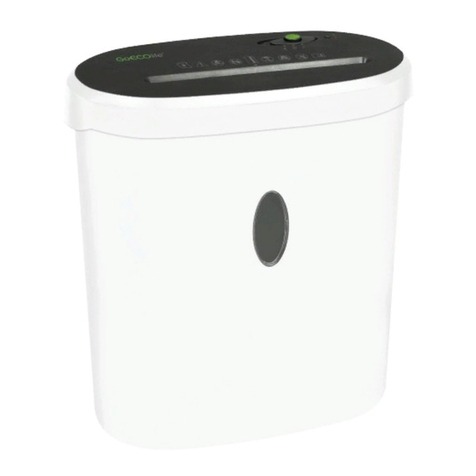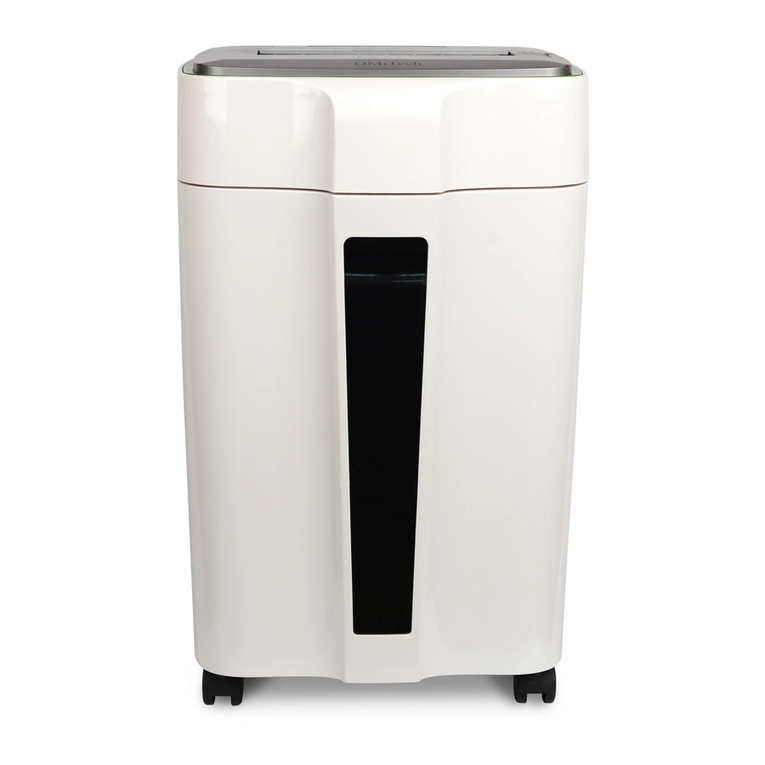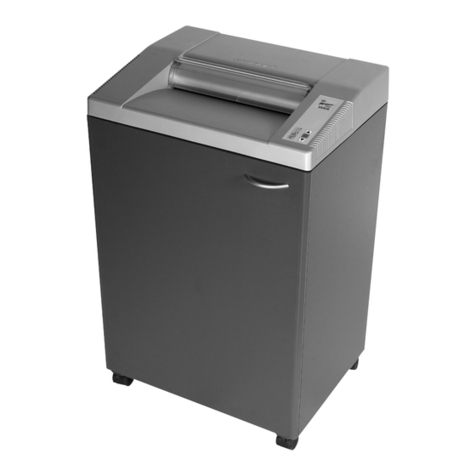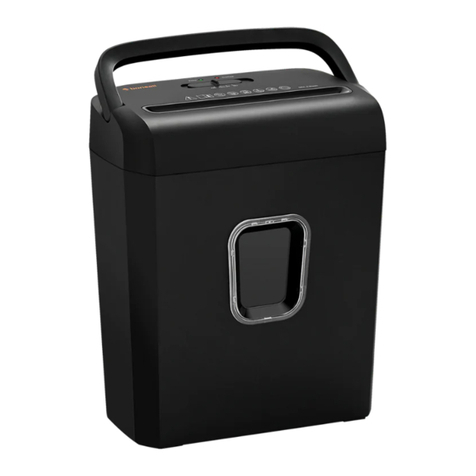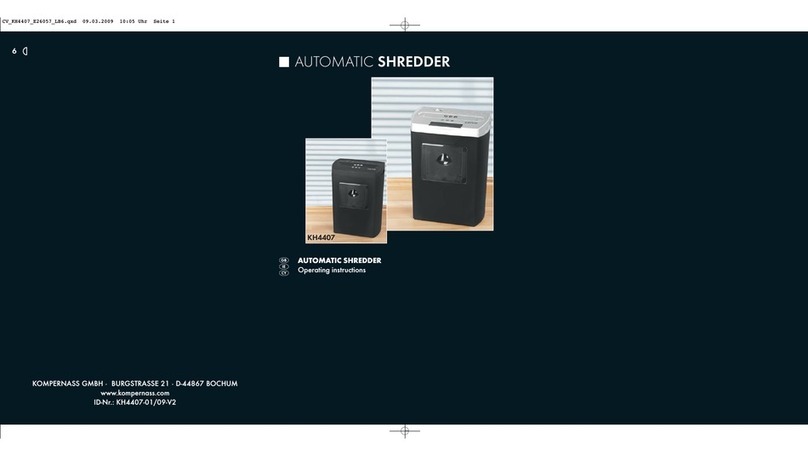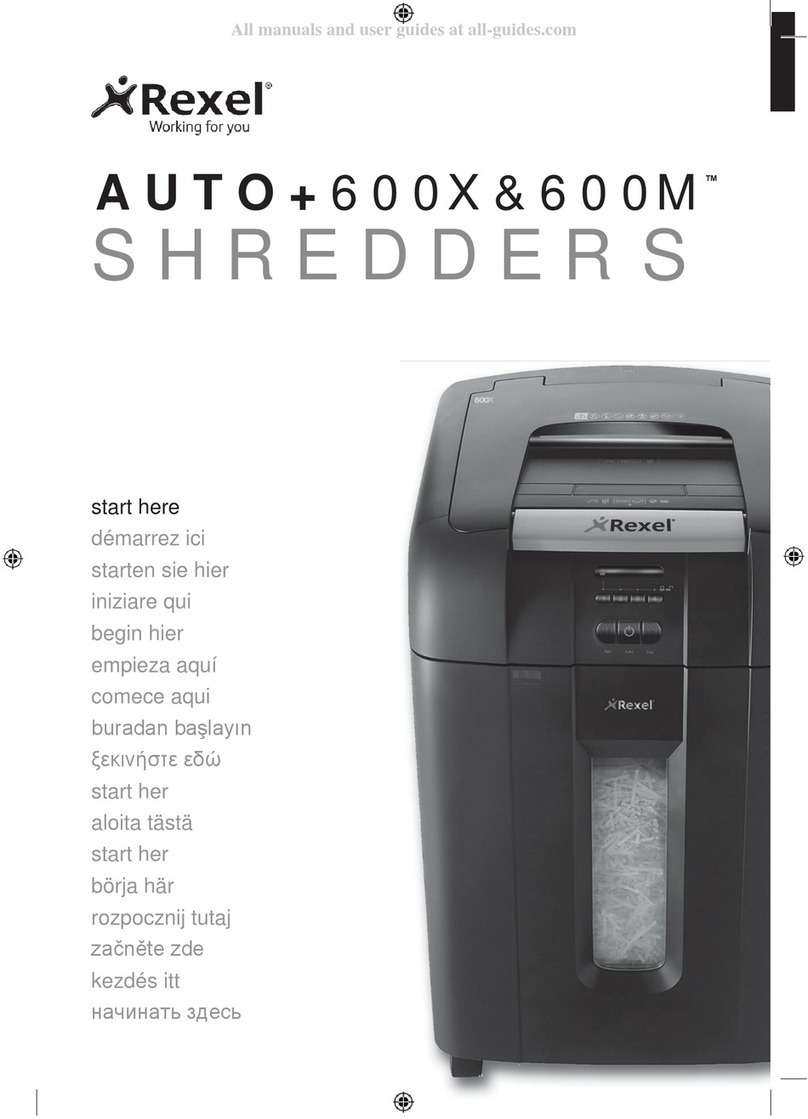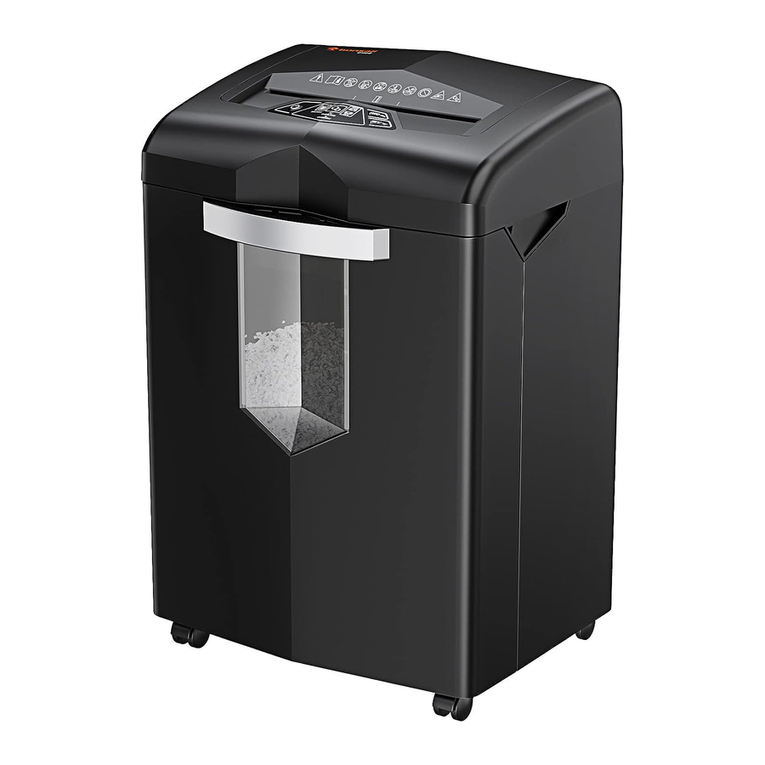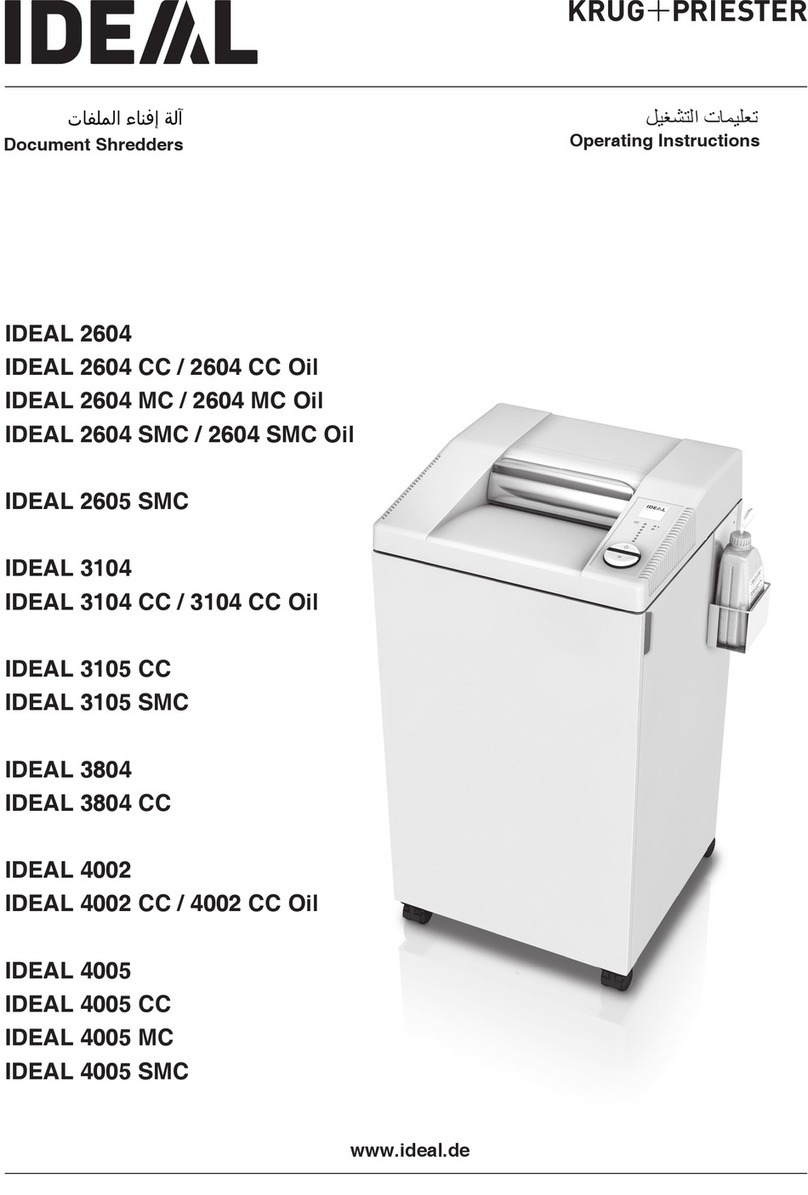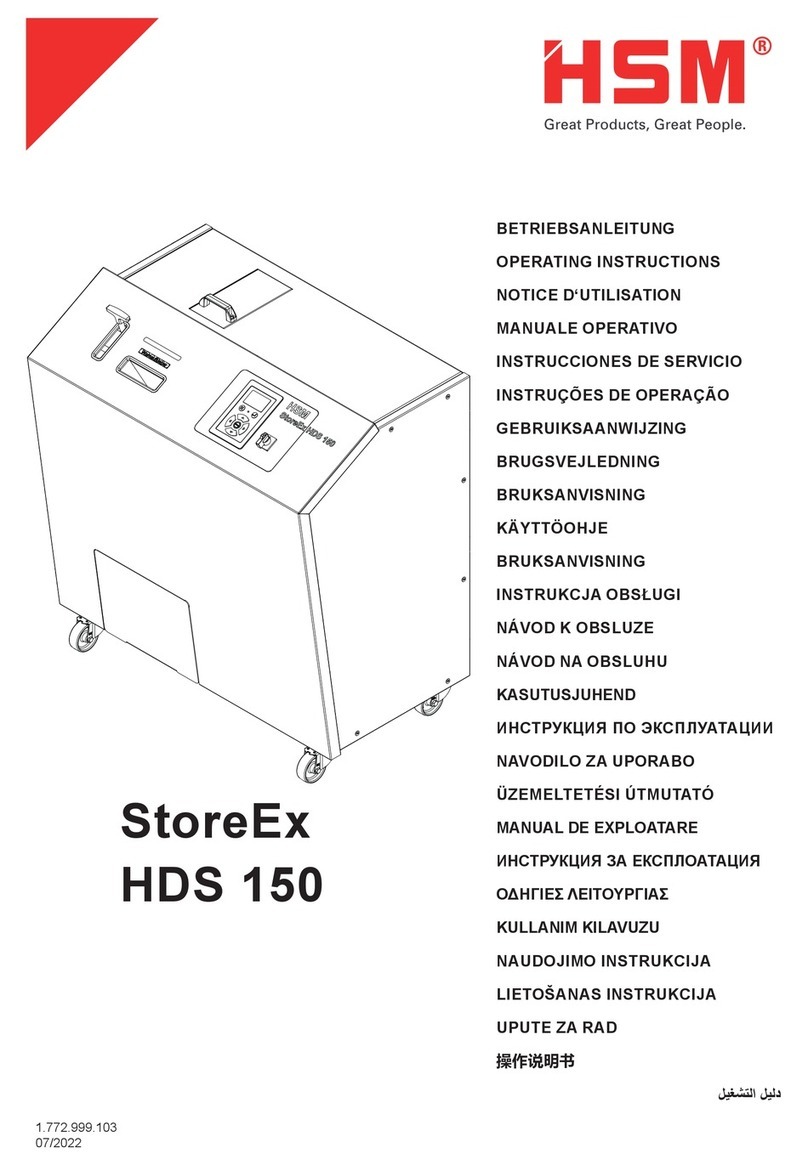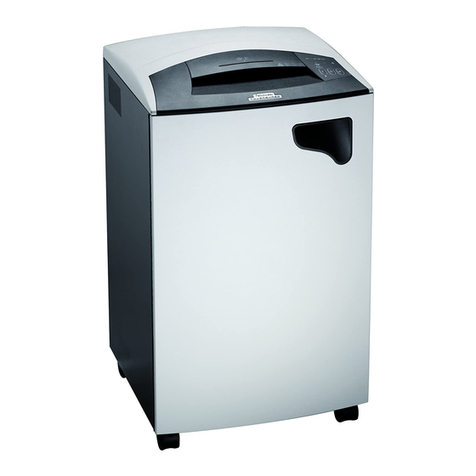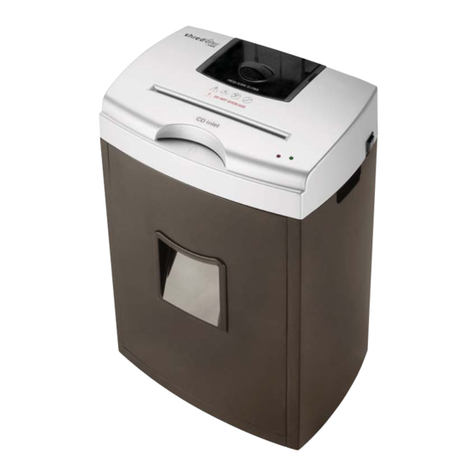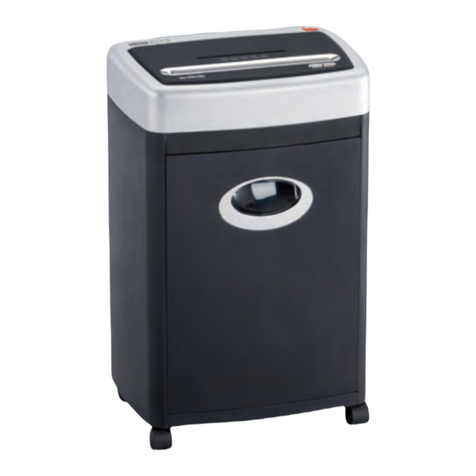Feider Machines FBT400-1 User manual

ORIGINAL INSTRUCTIONS
CAUTION: READ THE INSTRUCTION MANUAL BEFORE USE THE TOOL
BUILDER SAS
Zi du Casque, 32 rue Aristide Bergès, 31270 Cugnaux - France
Made in P.R.C
PETROL PLANT SHREDDER
FBT400-1
01

Identification
Machine Identification (Pic.1)
A. Hopper
B. Motor
C. Chip Outlet
D. Chipper Funnel
E. Choke
F. Fuel Cock
G. ON/OFF Switch
H. Throttle
I. Fuel Tank Cap
J. Air Cleaner
K. Exhaust
L. Pull Start Handle
Pic.1 Chipper/Shredder Identification
Pic.1
02

SECTION 1: SAFETY
IMPORTANT
READ CAREFULLY BEFORE USE
KEEP FOR FUTURE REFERENCE
Safe operating practices
Training
Become familiar with the owner's manual before attempting to operate this equipment.
Preparation
1) Do not allow children to operate this equipment;
2) Do not operate this equipment in the vicinity of bystanders;
3) Do not run engine powered machines in an enclosed area since the exhaust from an engine
contains carbon monoxide, which is colourless, odourless, and tasteless; carbon monoxide
can be extremely dangerous in enclosed areas;
4) Wear ear protection and safety glasses at all times while operating the machine;
5) Avoid wearing clothing that is loose fitting or that has hanging cords or ties;
6) Only operate the machine in open space (e.g. not close to a wall or other fixed object) and
on a firm, level surface;
7) Do not operate the machine on a paved or gravel surface where ejected material could
cause injury;
8) Before starting the machine, check that all screws, nuts, bolts, and other fasteners are
properly secured and that guards and screens are in place. Replace damaged or unreadable
labels;
9) Use extra care in handling fuels. They are flammable and the vapours are explosive. The
following points should be observed:
use only an approved container;
Never remove the fuel cap or add fuel with the power source running. Allow engine and
exhaust components to cool before refuelling;
do not smoke;
never refuel the machine indoors;
never store the machine or fuel container inside where there is an open flame, such as a
water heater;
if fuel is spilled, do not attempt to start the power source, but move the machine away from
the area of spillage before starting;
always replace and securely tighten the fuel cap after refuelling;
If the fuel tank is drained, this should be done outdoors.
03

Operation
1) Before starting the machine, look into the feeding chamber to make certain that it is empty;
2) Keep your face and body away from the feed intake opening;
3) Do not allow hands or any other part of the body or clothing inside the feeding chamber,
discharge chute, or near any moving part;
4) Keep proper balance and footing at all times. Do not overreach. Never stand at a higher
level than the base of the machine when feeding material into it;
5) Always stand clear of the discharge zone when operating this machine;
6) When feeding material into the machine be extremely careful that pieces of metal, rocks,
bottles, cans or other foreign objects are not included;
7) If the cutting mechanism strikes any foreign objects or if the machine should start making
any unusual noise or vibration, shut off the power source and allow the machine to stop.
Disconnect the spark plug wire from the spark plug (electric unit disconnect from supply) and
take the following steps:
inspect for damage;
check for and tighten any loose parts ;
Have any damaged parts replaced or repaired with parts having equivalent specifications.
8) Do not allow processed material to build up in the discharge zone; this may prevent proper
discharge and can result in kickback of material through the feed intake opening;
9) If the machine becomes clogged at the inlet opening or discharge chute shut-off the power
source and disconnect the spark plug wire or remove the ignition key before clearing debris in
the inlet opening or discharge chute. Keep the power source clear of debris and other
accumulations to prevent damage to the power source or possible fire. Remember that
operating the starting mechanism on engine powered machines will still cause the cutting
means to move;
10) keep all guards and deflectors in place and in good working condition;
11) Do not tamper with the power source governor settings; the governor controls the safe
maximum operating speed and protects the power source and all moving parts from damage
caused by over-speed. Seek authorised service if a problem exists;
12) Do not transport this machine while the power source is running;
13) Shut off the power source and disconnect the spark plug lead (electric unit disconnect from
supply) whenever you leave the work area;
14) Do not tilt the machine while the power source is running.
Maintenance and storage
a) When the machine is stopped for servicing, inspection, or storage, or to change an
accessory, shut off the power source, disconnect the spark plug wire from the spark plug,
make sure that all moving parts have come to a complete stop and, where a key is fitted
remove the key. Allow the machine to cool before making any inspections, adjustments, etc.
b) Store the machine where fuel vapour will not reach an open flame or spark. For extended
storage periods, run the unit dry of fuel. Always allow the machine to cool before storing;
c) When servicing the cutting means be aware that, even though the power source will not
start due to the interlock feature of the guard, the cutting means can still be moved by a
manual starting mechanism.
04

Additional safety instructions for units with bagging attachments
a) shut-off the power unit before attaching or removing the bag.
The purpose of safety symbols is to attract your attention to possible hazardous conditions.
This manual uses a series of symbols and signal words which are intended to convey the
level of importance of the safety messages. The progression of symbols is described
below. Remember that safety messages by themselves do not eliminate danger and are
not a substitute for proper accident prevention measures.
Safety Instructions for Machinery
1. READ THROUGH THE ENTIRE MANUAL BEFORE STARTING MACHINERY.
Machinery presents serious injury hazards to untrained users.
2. ALWAYS USE ANSI APPROVED SAFETY GLASSES WHEN OPERATING
MACHINERY. Everyday eyeglasses only have impact resistant lenses, they are NOT
safety glasses.
3. ALWAYS WEAR AN ANSI APPROVED RESPIRATOR WHEN OPERATING
MACHINERY THAT PRODUCES DUST. Wood dust is a carcinogen and can cause
cancer and severe respiratory illnesses.
4. ALWAYS USE HEARING PROTECTION WHEN OPERATING MACHINERY.
Machinery noise can cause permanent hearing damage.
5. WEAR PROPER APPAREL. DO NOT wear loose clothing, gloves, neckties, rings, or
jewelry which may get caught in moving parts. Wear protective hair covering to
contain long hair and wear non-slip footwear.
6. NEVER OPERATE MACHINERY WHEN TIRED, OR UNDER THE INFLUENCE OF
DRUGS OR ALCOHOL. Be mentally alert at all times when running machinery.
7. ONLY ALLOW TRAINED AND PROPERLY SUPERVISED PERSONNEL TO
OPERATE MACHINERY. Make sure operation instructions are clearly understood.
8. KEEP CHILDREN AND VISITORS AWAY. Keep all children and visitors a safe
distance from the work area.
9. NEVER LEAVE WHEN MACHINE IS RUNNING. Turn power OFF and allow all
Indicates an imminently hazardous situation which, if not
avoided, WILL result in death or serious injury
Indicates a potentially hazardous situation which, if not
avoided, COULD result in death or serious injury
Indicates a potentially hazardous situation which, if not
avoided, MAY result in minor or moderate injury. It may
also be used to alert against unsafe practices
This symbol is used to alert the user to useful
information about proper operation of the machine
05

moving parts to come to a complete stop before leaving machine unattended.
10. DO NOT USE IN DANGEROUS ENVIRONMENTS. DO NOT use machinery in damp,
wet locations, or where any flammable or noxious fumes may exist.
11. KEEP WORK AREA CLEAN AND WELL LIT. Clutter and dark shadows may cause
accidents.
12. TURN OFF THE MACHINE BEFORE REPAIRING THE TOOL.
13. MAINTAIN MACHINERY WITH CARE. Keep blades sharp and clean for best and
safest performance. Follow instructions for lubricating and changing accessories.
14. MAKE SURE GUARDS ARE IN PLACE AND WORK CORRECTLY BEFORE
USING MACHINERY.
15. REMOVE ADJUSTING KEYS AND WRENCHES. Make a habit of checking for keys
and adjusting wrenches before turning machinery ON.
16. CHECK FOR DAMAGED PARTS BEFORE USING MACHINERY. Check for binding
and alignment of parts, broken parts, part mounting, loose bolts, and any other
conditions that may affect machine operation. Repair or replace damaged parts.
17. USE RECOMMENDED ACCESSORIES. Refer to the instruction manual for
recommended accessories. The use of improper accessories may cause risk of
injury.
18. DO NOT FORCE MACHINERY. Work at the speed for which the machine or
accessory was designed.
19. SECURE WORKPIECE. Use clamps or a vise to hold the workpiece when practical.
A secured workpiece protects your hands and frees both hands to operate the
machine.
20. DO NOT OVERREACH. Keep proper footing and balance at all times.
21. MANY MACHINES WILL EJECT THE WORKPIECE TOWARD THE OPERATOR.
Know and avoid conditions that cause the workpiece to "kickback."
22. ALWAYS LOCK MOBILE BASES (IF USED) BEFORE OPERATING MACHINERY.
23. BE AWARE THAT CERTAIN WOODS MAY CAUSE AN ALLERGIC REACTION. In
people and animals, especially when exposed to fine dust. Make sure you know what
type of wood dust you will be exposed to and always wear an approved respirator.
24. HAND SAFETY: DO NOT put hands or other body parts into hopper, funnel, or outlet
while the blades are turning. The chipper/shredder can drag you into the blade,
causing amputation of fingers, hands or other body parts. DO NOT touch the exhaust
during or immediately after operation to prevent burns.
25. OPERATING LOCATION: Set up the chipper/shredder on firm, level, grass or dirt.
DO NOT set up the chipper/shredder on gravel, asphalt, concrete, or stone. The
chips are expelled from the machine with enough force to ricochet off of hard
surfaces and cause serious injury. DO NOT set up the chipper/shredder in a location
where sparks or heat from the motor could cause a fire.
26. SECURE FOOTING: Placing the chipper/shredder on a slope or slippery surface may
cause the operator to fall into the machine, causing burns from the motor, or an
amputation if an arm accidentally goes into the hopper. Wear non-slip, closed toed
shoes or boots to maintain secure footing.
27. JAMS AND CLOGGING: Turn the chipper/shredder OFF, allow all moving parts to
06

come to a complete stop, and disconnect the spark plug wire before attempting to
free a jam or clog.
28. FEEDING MATERIAL: Hold branches and brush loosely, and allow the
chipper/shredder to draw the material in. The machine sometimes will draw material
in very quickly and your hand may be drawn in if you are holding tightly. If the blades
hit a hard object, or if the machine begins to make an unusual noise or vibration,
immediately shut the chipper/shredder OFF.
29. TURN OFF CHIPPER/SHREDDER: Turn OFF the machine, allow all moving parts to
come to a complete stop, and disconnect the spark plug wire before moving the
machine, emptying the bag, unclogging the inlets or outlets, filling the gas tank, or
performing maintenance and repairs.
30. STARTING THE CHIPPER/SHREDDER: Make sure the hopper and funnel are
empty when starting the machine. The pull start cord may stop suddenly causing the
chipper/shredder to fall over or injure your hand or arm.
31. CLEANING CHIPPER/SHREDDER: Allow the motor to cool off, then brush dust and
chip build-up off of the motor to prevent fire or motor overheating.
Like all machinery there is potential danger when operating this machine.
Accidents are frequently caused by lack of familiarity or failure to pay attention.
Use this machine with respect and caution to lessen the possibility of operator
injury. If normal safety precautions are overlooked or ignored, serious personal
injury may occur.
No list of safety guidelines can be complete. Every environment is different.
Always consider safety first, as it applies to your individual working conditions.
Use this and other machinery with caution and respect. Failure to do so could
result in serious personal injury, damage to equipment, or poor work results.
Symbols
Read operator's manual
07

Keep bystanders away
Danger - Rotating blades. Keep hands and feet out of openings while machine
is running
Wear eye and ear protection
Do not use as a step
SECTION 2: SET UP
Set Up Safety
This machine presents serious injury hazards to untrained users. Read through
this entire manual to become familiar with the controls and operations before
starting the machine!
Site Considerations
The chipper/shredder must be placed on a firm, flat, grass or dirt surface to prevent the
machine from tipping. DO NOT place the machine on concrete, asphalt, or other hard
surfaces. The chips could bounce up from the hard surface and cause injury.
08

Consider the length of the material to be processed through the machine and make sure
that there is enough height above the chipper/shredder to accommodate the material.
Make sure the unit is located close to the area where the chips are going to be used to
reduce carrying.
Stay clear of the discharge area. Make sure all bystanders, children, pets, or objects that
you do not want damaged or covered in chips, are clear of the discharge area.
Assembly
The major components of this chipper/shredder have been assembled at the factory.
Some minor assembly is required. The assembly process will use all the parts and
hardware listed in the inventory.
DO NOT attempt to start this machine until all assembly has been completed. Serious
personal injury and damage to the machine could occur.
To assemble the chipper/shredder:
1. Tip the chipper/shredder over and remove the bolts shown in Pic.2. DO NOT turn the
chipper/shredder over once it is full of oil and gas. The oil and gas will spill out.
For fixing the leg: 2pcs Bolt M8x20, 1pc Bolt M8x200, 1pc Support Tube, 4pcs
Washer Ø8, 3pcs Lock nut M8.
For fixing the wheel assembly: 4pcs Bolt M8x20, 4pcs Washer Ø8, 4pcs Lock nut
M8.
Pic.2 Attaching the leg
2. Attach the wheel assembly and the leg with the bolts that were removed in Step 1.
Assembly of the ejection hopper
09

1 / Position the rear
housing ejection and
the
foot
2 / Respect the
mounting direction of
the foot see photo 2
chamfer,
Lay the machine on the
handlebars and the
wheels, then
undo the 4 grid screws
the grid
Remove Put the large
ejection housing in
place and tighten the 4
fixing screws
10

3. Place the handle on the hopper and line up all of the holes. Secure it with flat washer
(Ø8, 4pcs), spring washer (Ø8, 4pcs) and bolt (M8x20, 4pcs). (See Pic.3)
Pic.3 Installing the handle
4. Place the funnel over the studs in the side of the chipper/shredder and secure it with
3 / fit the large
screw without
forgetting the
spacer
Put the 2
remaining screws
and tighten the
assembly
Fit the lower
protection grid
using the 4 screws
and nuts
11

flat washer (Ø8, 3pcs), spring washer (Ø8, 3pcs) and locknut (M8, 3pcs). (See Pic.4)
Pic.4 Funnel installation
5. Before operating, fill the motor with oil and gas according to the instructions.
This chipper/shredder does not have oil in the motor when shipped. Add oil
before operating the chipper/shredder, or the motor will seize.
Filling the engine oil
Place the machine on a level surface and remove the oil filler cap (Pic.5) (5.1).
Add engine oil up to the upper level of the dipstick (Pic.6) (6.1).
Filling the fuel tank
The chipper/shredder is powered by a four-stroke engine, which uses unleaded gasoline
fuel. Use a suitable funnel to transfer the fuel to the engines fuel tank, taking care not to
spill any fuel or over fill the fuel tank. The fuel tank should not be filled above the top of the
fuel filter as shown in Pic.7
12

SECTION 3: OPERATIONS
Operation Safety
Damage to your eyes, hands, and ears could result from using this machine
without proper protective gear. Always wear safety glasses, hearing protection,
and leather gloves when operating this machine.
Loose hair and clothing could get caught in machinery and cause serious
personal injury. Keep loose clothing and long hair away from moving machinery.
If you have never used this type of machine or equipment before, WE STRONGLY
RECOMMEND that you read books, trade magazines, or get formal training
before beginning any projects.
This chipper/shredder does not have oil in the motor when shipped. Add oil
before operating the chipper/shredder, or the motor will seize.
Chipping/Shredding
Understand and follow all of the safety precautions listed in SECTION 1: SAFETY before
operation.
This chipper/shredder is intended for mulching garden and pruning waste such as green
branches, twigs, brush, vines, and long grasses. DO NOT use this chipper/shredder for
chipping construction debris, plastic, paper products, rope or twine, or any material that
may contain metal.
Note: Remove any nails, rope, twine, or rocks that may be imbedded in roots, before
inserting material into the chipper/shredder.
To operate the chipper/shredder:
1. Place the chipper/shredder on a flat, firm, dirt or grass surface and point the outlet in
a safe direction.
2. Check the oil and gas levels before starting the motor.
3. Place the bag over the chute and tie it securely in place.
4. Make sure the hopper and funnel are empty before starting the engine. If there is
material in the hopper or funnel, the pull start cord may stop suddenly causing the
13

chipper/shredder to fall over, or causing injury to your hand or arm.
5. Put on eye and ear protection, and gloves, start the chipper/shredder as instructed in
the manual, then set the throttle to fast.
6. Stand to the side of the hopper and make sure you have a stable stance and firm
Turn the engine ON/OFF switch to the ON position (Pic.10) (10.1).
Hold down the engine firmly with one hand on the frame. With the other hand grip the
recoil starter cord handle and pull slowly until resistance is felt indicating that the recoil
starter is engaged. When resistance is felt pull the cord sharply (Pic.11). Continue this
procedure until the engine starts.
When the engine has been successfully started and is running smoothly return the choke
lever to the ONposition (Pic.12) (12.1).
footing.
To start the chipper/shredder:
Turn the fuel lever to the ON position (Pic.8) (8.1).
Set the choke lever to the OFF position (Pic.9) (9.1).
14

When the engine is running, the speed can be adjusted by moving the throttle control
lever (Pic.13) (13.1) to the high (indicated by a hare), medium or low position (indicated by
a tortoise).
To stop the chipper/shredder:
To stop the engine, turn the engine ON/OFF switch to the OFF position (Pic.14) (14.1).
When the engine has stopped and before storage, turns the fuel lever to the OFF position
as shown in Pic.15 (15.1).
To shred twigs, leaves, and brush:
1. Slowly pour the material into the hopper. DO NOT try to stuff too much material in at
one time or the machine will jam.
2. Use a branch to push the material into the hopper if necessary (see Pic.16). DO NOT
use your hands!
Pic.16 Shredding leaves
Note: Move the throttle to the idle position, or turn the chipper/shredder OFF, when not
actively shredding or chipping.
3. Turn OFF the machine, allow all moving parts to completely stop, and disconnect the
spark plug wire before moving the machine, emptying the bag, unclogging the inlets
or outlets, filling the gas tank, or performing maintenance and repairs.
15

Shredding Tips:
Feed material into the chipper/shredder slowly. If the motor begins to bog down, you
are feeding too fast.
Roots and dirty material will dull or damage the blades.
Remove the chips often. Allowing the chips to pile up to the outlet will cause the outlet
to clog.
Avoid shredding wet leaves to reduce clogging. If you must shred wet material,
alternate wet and dry material.
To chip branches:
1. Stand to the side of the hopper and make sure you have a stable stance and firm
footing.
2. Remove twigs and smaller branches from the branch if they might catch on the edges
of the funnel and prevent the branch from going in.
3. Place branches into the funnel, thick end first, and allow the blades to draw the
branch into the funnel (see Pic.17).
Pic.17 Chipping branches
4. When finished chipping, turn OFF the machine, allow all moving parts to come to a
complete stop, and disconnect the spark plug wire before moving the machine,
emptying the bag, unclogging the inlets or outlets, filling the gas tank, or performing
maintenance and repairs.
Chipping Tips:
DO NOT feed material in excess of the diameter indicated on the funnel cover into the
funnel. Large branches will cause the motor to stall.
Chipping wood when it is green is easier on the machine. The blades will stay sharper
longer.
The chipper/shredder will work best if the blades are sharp. Rotate, sharpen, or
replace the blades as soon as chipper/shredder performance begins to deteriorate.
16

SECTION 4: MAINTENANCE
Turn OFF the machine, allow all moving parts to come to a complete stop, and
disconnect the spark plug wire before moving the machine, emptying the bag,
unclogging the inlets or outlets, filling the gas tank, or performing maintenance
and repairs.
Warning! There is danger of rotating cutting means; before maintenance and
cleaning, be sure that the rotating cutting means has come to a complete stop.
Visual Inspection
Before and after using the chipper/shredder, closely inspect the machine for loose parts
and damage.
Check the hopper, hopper guard, and funnel for cracks, holes, and loose bolts.
Check the box frame for cracks or damage.
Check the entire machine for loose bolts or screws.
Check the blades for cracks and dings.
Check the engine oil level.
Cleaning
Clean the machine after each use. Allow the motor to cool and remove the spark plug wire.
Brush off or vacuum wood chips and wipe off the remaining dust from the exterior of the
machine with a dry cloth. DO NOT rinse off the chipper/ shredder with water. Remove any
chips or debris from the hopper and the discharge chute.
It is much harder to clean the machine if you allow it to sit for a while after use. You may
need to use an engine cleaner to remove the built up resins from the motor. Engine
cleaners are available at most auto parts stores.
Maintenance of engine
Spark Plug
After every 50 hours of running the spark plug should be removed. Check the color of the
deposits on the end of the spark plug it should be a “Tan” color. Remove all deposits using
a stiff brush a brass wire brush is ideal. Check the spark plug gap (Pic.18) (18.1) and
adjust if required. The correct gap should be 0.7 to 0.8mm.
17

Engine oil replacement
Place the machine on a level surface and warm up the engine for several minutes. Then
stop the engine.
Remove the oil filler cap (Pic.5) (5.1).
Place an oil pan under the engine. Remove the oil drain plug (Pic.5) (5.2) so that the oil
can be completely drained. You will need to use a tube or other similar device to prevent
the oil leaking onto the frame of the chipper/shredder.
Check the oil drain plug, gasket, oil filler cap and O-ring and if damaged replace.
Reinstall the oil drain plug.
Add engine oil up to the upper level of the dipstick (Pic.6) (6.1).
Air Filter
After every 100 hours of running or every month, the air filter (Pic.19) (19.1) should be
removed, examined for deterioration and cleaned. Clean the air filter thoroughly using
environmentally friendly water based degreasing agent. Allow to dry fully then replace the
air filter. Warning! Never run the engine without the air filter fitted.
Fuel tank filter
After every 150 hours of running or every three months the fuel tank filter (Pic.20) (20.1)
should be removed and cleaned. Remove the fuel tank filler cap and the filter, clean the
filter thoroughly using environmentally friendly water based degreasing agent and re-fit.
Replacing Blades
Sharpen or replace the blades as soon as the chipping performance begins to deteriorate,
or if you notice dings, chips, or cracks.
To perform this procedure:
1. TURN OFF THE MACHINE, ALLOW ALL MOVING PARTS TO COME TO A
COMPLETE STOP, AND DISCONNECT THE SPARK PLUG WIRE!
2. Remove the side cover plate to expose the blades. (See Pic.21)
3. Remove one blade, rotate the impeller, and remove the second blade.
4. Have the original blades professionally sharpened, or order a replacement set, then
re-install the blades.
5. Replace the side cover plate and re-attach the spark plug wire.
18

Pic.21 Chipper blade
Replacing V-Belt
Replace or tighten the V-belt if you notice the motor running and the chipper blades
are not spinning.
To perform this procedure:
1. TURN OFF THE MACHINE, ALLOW ALL MOVING PARTS TO COME TO A
COMPLETE STOP, AND DISCONNECT THE SPARK PLUG WIRE!
2. Remove the V-belt cover as shown in Pic.22.
3. Roll the belt off of the pulleys and install the new belt.
4. Replace the V-belt cover and re-attach the spark plug wire.
19

Storage
Follow these guidelines when storing your chipper/shredder.
Remove the spark plug wire to prevent unauthorized starting.
Empty the bag before storing to keep the mulch from rotting in the bag.
Place the chipper/shredder in a dry, level area. If the chipper/shredder is tipped it may
leak oil and gas.
DO NOT store the chipper/shredder near an ignition source, such as a wood stove,
gas or electric heater, or an appliance or heater with a pilot light.
Store the chipper/shredder in a well-ventilated area. DO NOT store the
chipper/shredder in an area that will allow toxic gas fumes into areas inhabited by
humans or animals.
Close the discharge chute deflector and place the covers over the hopper and the
funnel to prevent objects or critters from getting into the machine.
If the engine is not to be used or is to be stored for more than one month the following
storage procedure should be carried out. Drain all the fuel from the fuel tank and the
carburetor ensure that all the fuel has been removed. Remove the spark plug and
pour approximately one tablespoon full of clean engine oil into the spark plug hole.
With the ignition turned OFF gently pull on the recoil starter cord several times. Re-fit
the spark plug continue to pull the recoil starter cord until the piston is on the
compression stroke (when resistance is felt) then stop pulling.
SECTION 5: SERVICE
Review the troubleshooting and procedures in this section to fix your machine if a problem
develops.
Turn OFF the machine, allow all moving parts to come to a complete stop, and
disconnect the spark plug wire before moving the machine, emptying the bag,
unclogging the inlets or outlets, filling the gas tank, or performing maintenance
and repairs.
20
Table of contents
Other Feider Machines Paper Shredder manuals

Feider Machines
Feider Machines FBT420-1 User manual
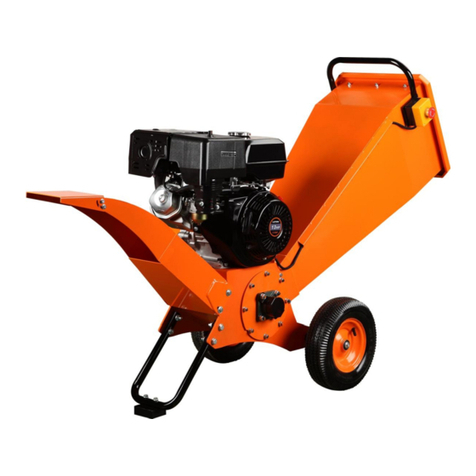
Feider Machines
Feider Machines FBT420 User manual
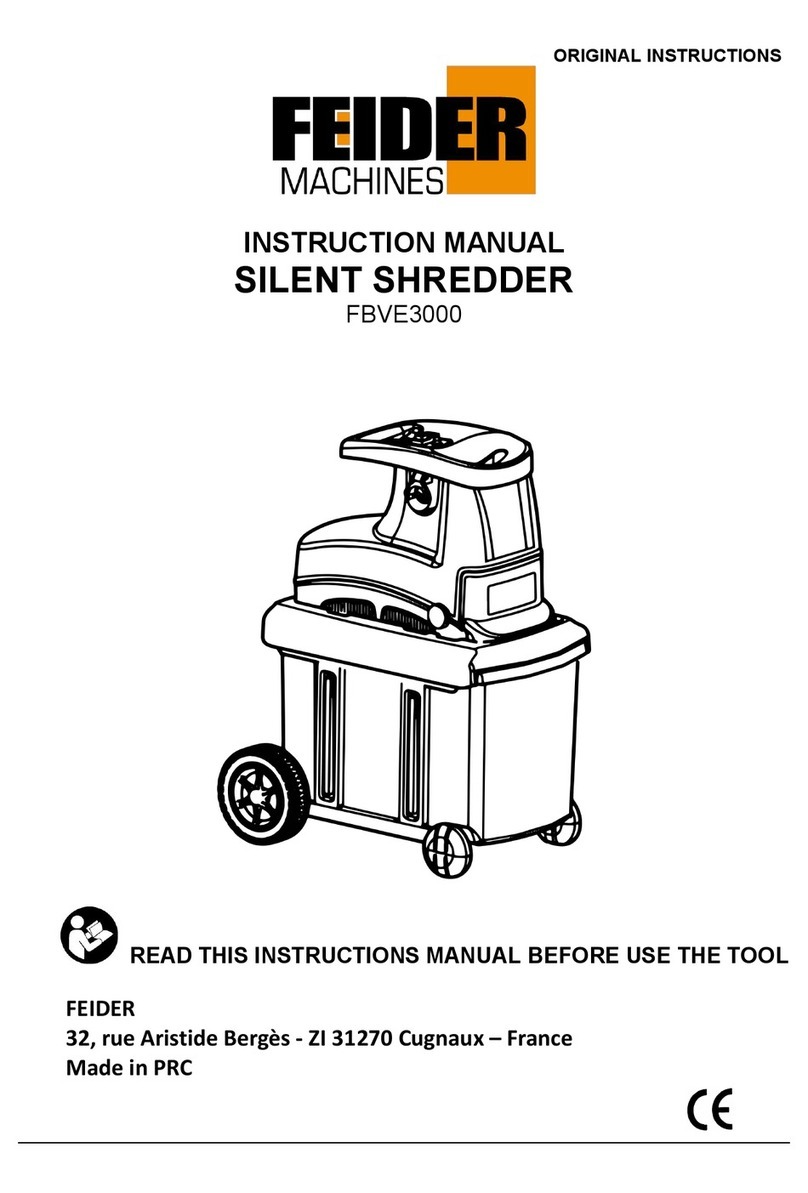
Feider Machines
Feider Machines FBVE3000 User manual

Feider Machines
Feider Machines FBVES2800-UK User manual
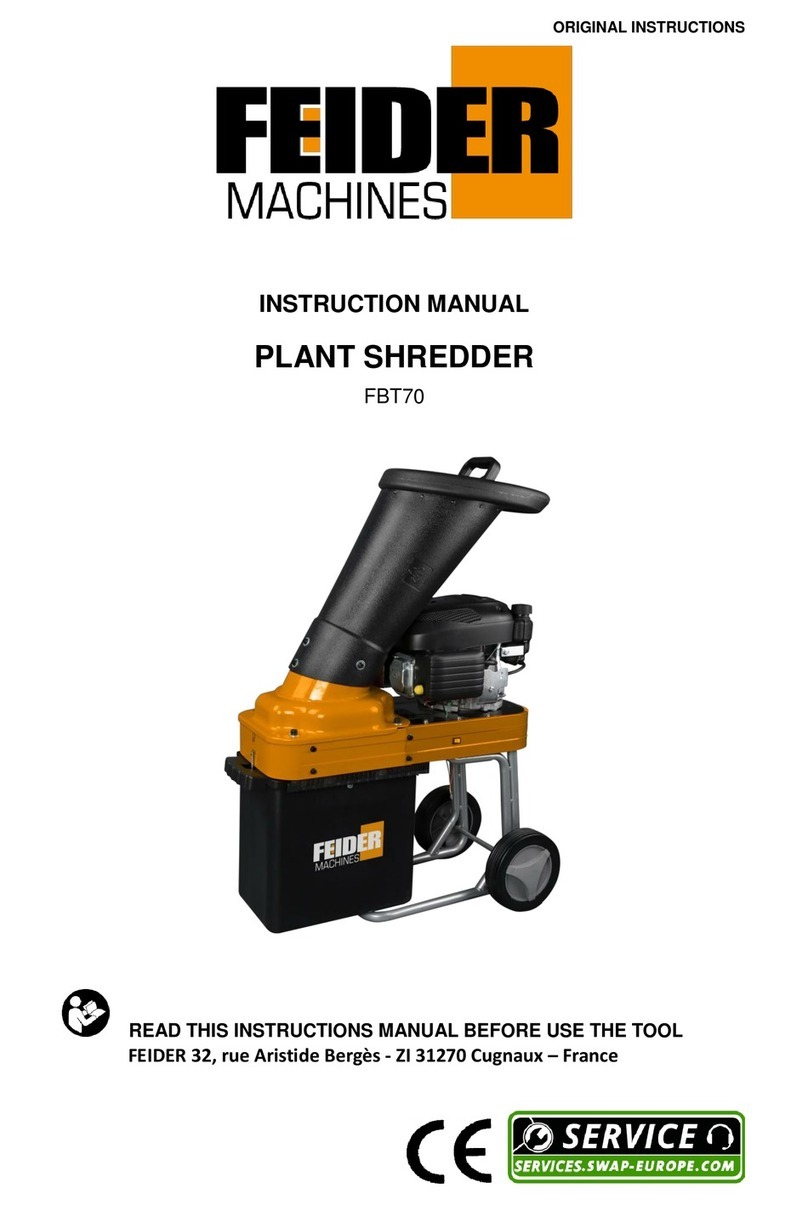
Feider Machines
Feider Machines FBT70 User manual

Feider Machines
Feider Machines FBT70-2 User manual
